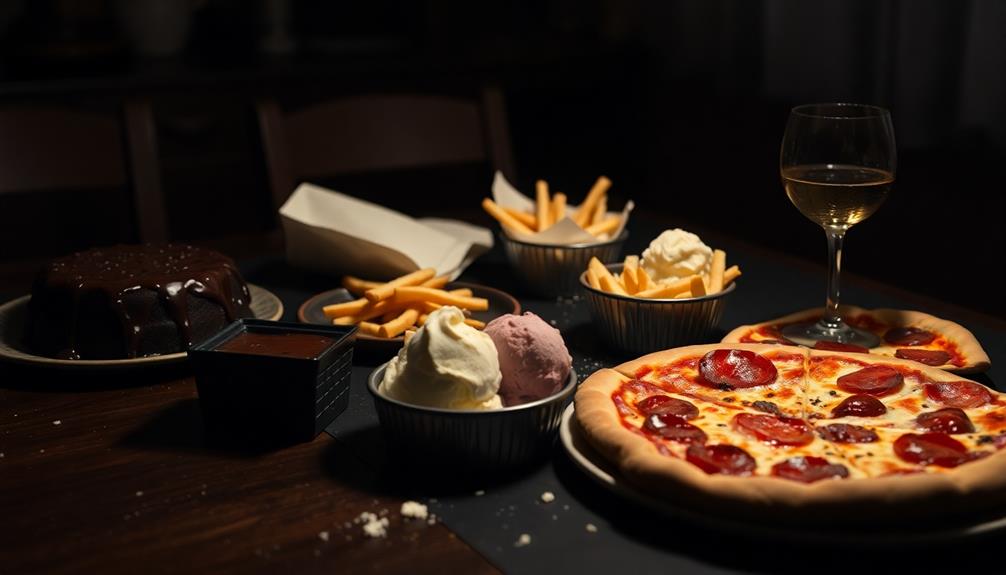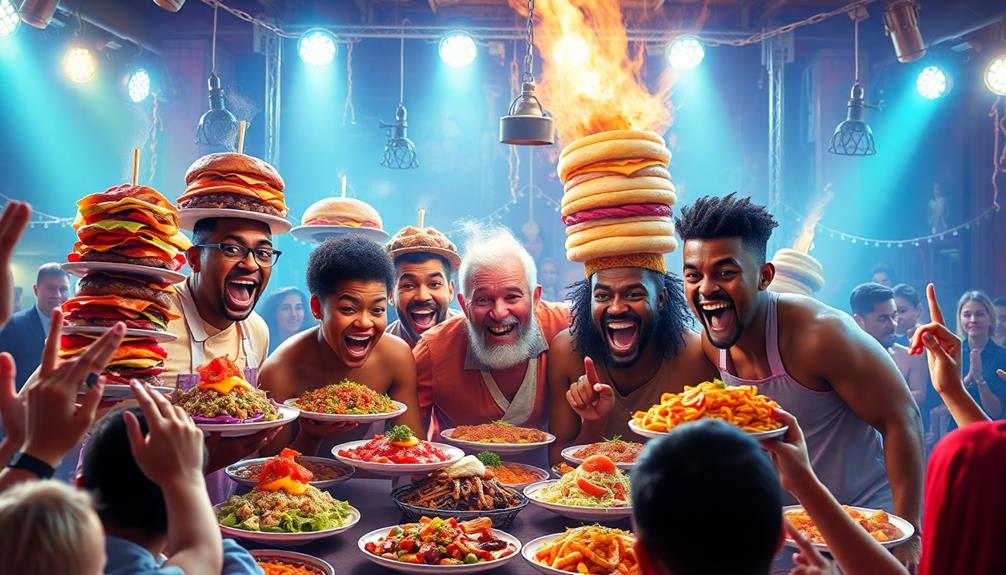Instagram beauty gurus reveal 10 makeup secrets for flawless looks. Embrace natural light for seamless blending and product application. Master contouring by highlighting individual face shapes with precise blending techniques. Blend eyeshadows using circular motions and intermediary shades for a professional finish. Achieve perfect winged eyeliner with gel or liquid liners and practice angled extensions. Apply foundation in thin layers using beauty tools for even coverage and radiant finish. Enhance lips with powders, liners, and highlighters for long-lasting color. Explore bold makeup trends from influencers like @jadeywadey180 and @sadiaslayy. Kickstart your beauty routine with skincare practices for a flawless makeup base. Further beauty revelations await.
Key Takeaways
- Use natural light for seamless blending.
- Tailor contouring to face shape.
- Master eyeshadow blending techniques.
- Perfect winged eyeliner with precision.
- Set makeup with spray and powder.
Natural Makeup Looks for Everyday
Instagram beauty gurus frequently showcase natural makeup looks perfect for everyday wear. These looks are designed to enhance one's features subtly without heavy application of makeup.
One essential element in achieving this natural look is utilizing natural light. By applying makeup in natural light, one can guarantee that the colors blend seamlessly with the skin tone, avoiding any harsh lines or mismatched shades. Natural light also helps in determining the right amount of product to use, preventing over-application that can appear unnatural in daylight.
Beauty influencers often stress the importance of finding a well-lit area to do makeup, as it allows for a more accurate representation of how the makeup will look in different settings. The soft, diffused light of the outdoors or near a window is ideal for achieving that natural, everyday makeup look that Instagram followers love.
Contouring and Highlighting Techniques
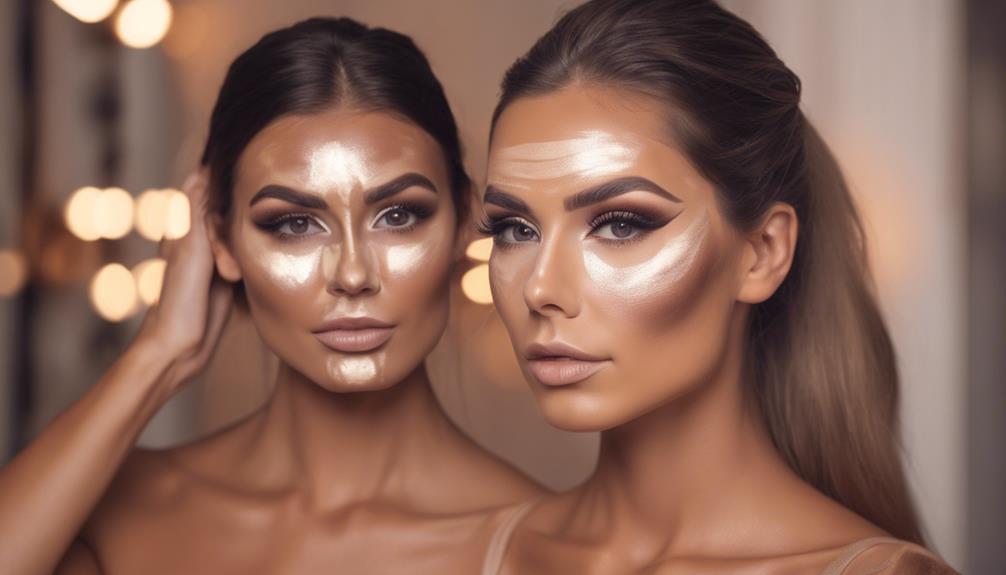
To achieve a flawless contoured look, mastering the art of shading and highlighting is vital. When it comes to contouring, it's essential to understand that one size doesn't fit all – contouring techniques should be adapted to individual face shapes, rather than following a generic oval template often seen in tutorials.
Overdoing contouring can result in a harsh, masculine appearance that resembles drag queen makeup, so it's important to blend with precision and subtlety. Thin layers of concealer and foundation are key to achieving a seamless finish that looks natural and not cakey.
Additionally, when highlighting, it's advisable to use a light hand with glittery products to avoid the dreaded shimmery stripe effect on the skin.
Eyeshadow Blending Tips and Tricks

When it comes to achieving flawless eyeshadow looks, mastering the art of blending is key. By utilizing gentle windshield wiper motions and a fluffy blending brush, one can seamlessly move between eyeshadow colors for a soft, diffused finish.
Layering shades from light to dark and focusing on blending the edges guarantees a professional result without any harsh lines or patchiness.
Color Transition Techniques
Achieving smooth color gradients in eyeshadow blending is essential for creating a professional and polished makeup look. Beauty gurus on Instagram employ various techniques to seamlessly shift between eyeshadow colors, enhancing depth and dimension in their eye makeup.
To achieve this, they often rely on:
- Windshield Wiper Motion: This technique involves moving the brush back and forth in a windshield wiper motion across the crease to blend colors smoothly.
- Circular Blending: By using circular motions with a blending brush, beauty enthusiasts can blend different eyeshadow shades together for a flawless finish.
- Intermediary Shades: These shades act as intermediaries between light and dark colors, facilitating a cohesive blend and preventing harsh lines.
- Clean Blending Brushes: Regularly cleaning blending brushes ensures ideal color payoff and prevents muddying of eyeshadow colors during application.
Blending Brush Selection
For seamless blending of eyeshadow colors, selecting the right blending brush is essential for achieving a professional and polished makeup look. Makeup techniques emphasize the importance of choosing a fluffy blending brush with soft bristles to guarantee a smooth blend between different eyeshadow shades.
A smaller blending brush is recommended for precise application in the crease and outer corner of the eye, allowing for detailed and controlled blending. Using a clean blending brush is vital to soften harsh lines and create a polished transition between colors, enhancing the overall eye makeup look.
Investing in high-quality blending brushes is advised for those looking to achieve professional-looking eyeshadow results. Experimenting with different blending brush shapes and sizes is also encouraged to find the ones that work best for individual eye shapes and desired eyeshadow effects.
Achieving the Perfect Winged Eyeliner
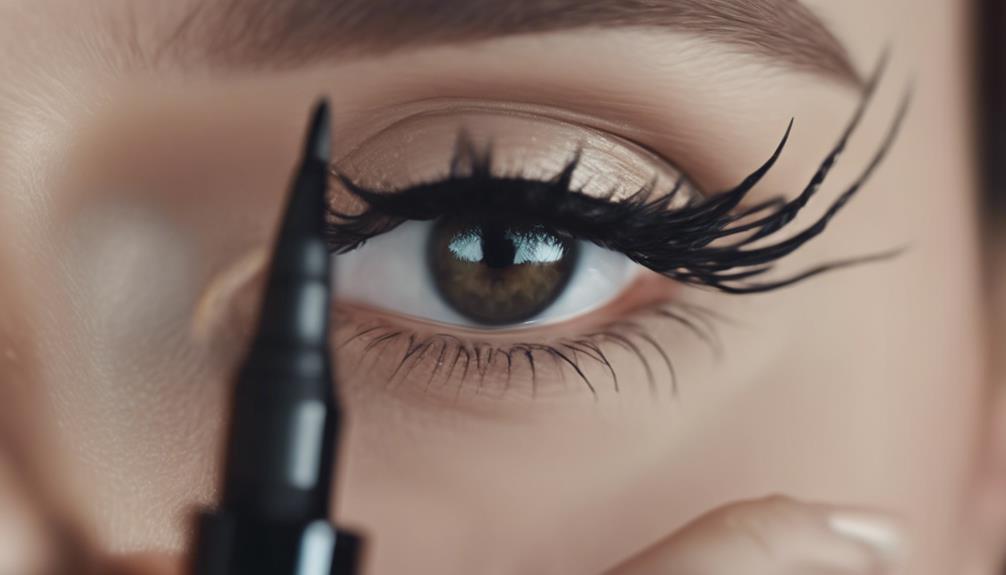
To achieve the perfect winged eyeliner, start by using a gel or liquid eyeliner with a precise applicator for clean lines.
When applying winged eyeliner, follow these tips:
- Begin by drawing a thin line along the upper lash line, extending it outward at a slight angle.
- Connect the outer edge of the wing to the upper lash line to create a seamless look.
- Adjust the angle and length of the wing to complement your eye shape and desired style.
Remember that practice and patience are key to mastering the art of creating the perfect winged eyeliner.
Flawless Foundation Application Methods
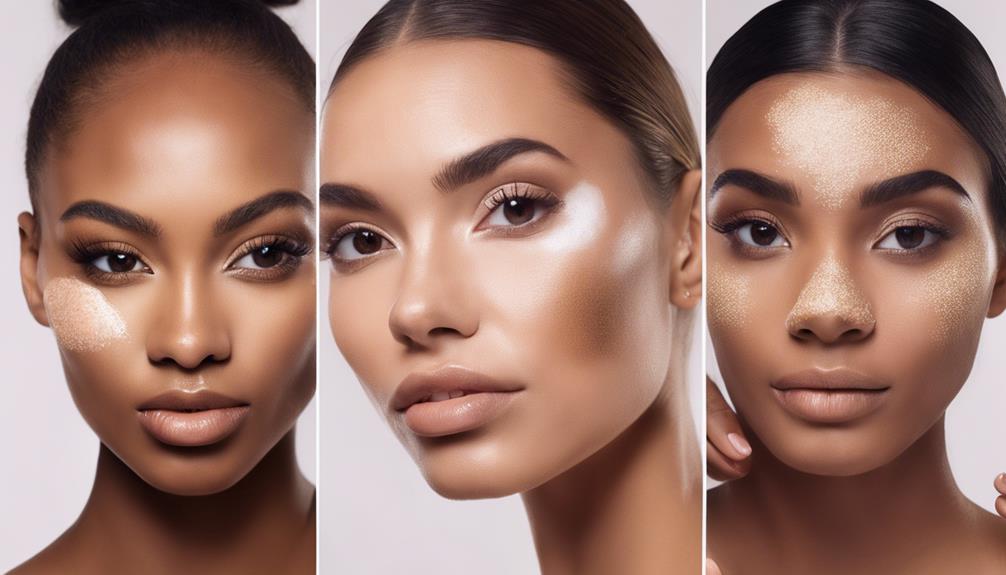
Instagram beauty gurus swear by using a damp beauty sponge for flawless foundation application. This technique helps blend foundation seamlessly into the skin, creating a natural and airbrushed look.
Another popular method recommended by these beauty experts is applying foundation with a brush in downward strokes to help smooth out skin texture and guarantee an even application.
For those looking to achieve a radiant complexion, mixing foundation with a drop of facial oil can create a dewy and luminous finish.
To set the foundation and increase its longevity, beauty gurus advise using a translucent powder to control shine.
Lastly, applying foundation in thin, buildable layers is key to achieving a flawless and natural appearance.
Lipstick Hacks for Long-lasting Wear
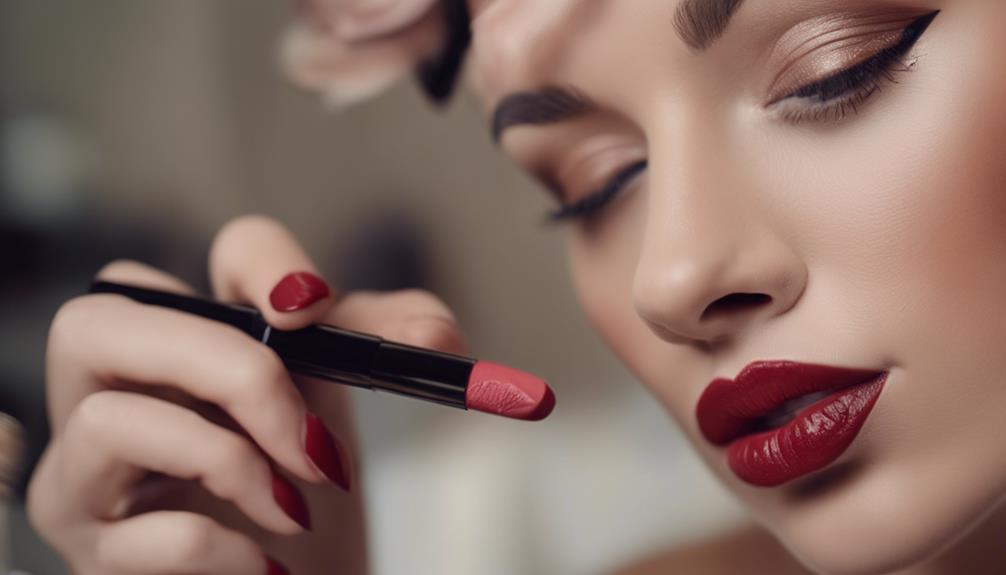
When it comes to achieving long-lasting lipstick wear, using a lip primer can provide a solid base for color adhesion. The setting powder trick helps to lock in the pigment for extended durability. These techniques, favored by beauty gurus, are vital for maintaining vibrant lip color throughout the day.
Lip Primer Application
How can applying lip primer before lipstick contribute to long-lasting wear and a flawless finish?
Lip primer plays an important role in preparing the lips for the application of lipstick. Here are some key benefits of using lip primer:
- Extended Wear Time: Lip primer creates a smooth base that helps the lipstick adhere better to the lips, preventing it from fading or smudging throughout the day.
- Hydration and Comfort: By hydrating and conditioning the lips, lip primer guarantees a comfortable feel, even with matte or long-wearing lip products.
- Enhanced Color Payoff: Lip primers can boost the vibrancy and longevity of lip colors, making them appear more intense and pigmented.
- Sun Protection: Some lip primers contain SPF, offering an added layer of protection against sun damage, which is essential for maintaining healthy lips.
Setting Powder Trick
Utilizing setting powder as a lipstick hack can greatly enhance the longevity of your lip color throughout the day. By applying a thin layer of setting powder over your lipstick, you can effectively secure it in place, preventing smudging and fading.
This popular technique among makeup artists and beauty gurus serves as a dependable way to maintain long-lasting lip color, especially during events where frequent touch-ups may not be convenient. The setting powder trick offers a practical solution for individuals looking to guarantee their lipstick stays vibrant and intact for extended periods.
To implement this hack, simply use a brush to gently pat setting powder over your lipstick, helping to lock in the color and provide a matte finish. With this simple yet effective method, you can enjoy a flawless lip look that lasts throughout the day without the need for constant reapplication.
Color Correcting and Concealing Techniques
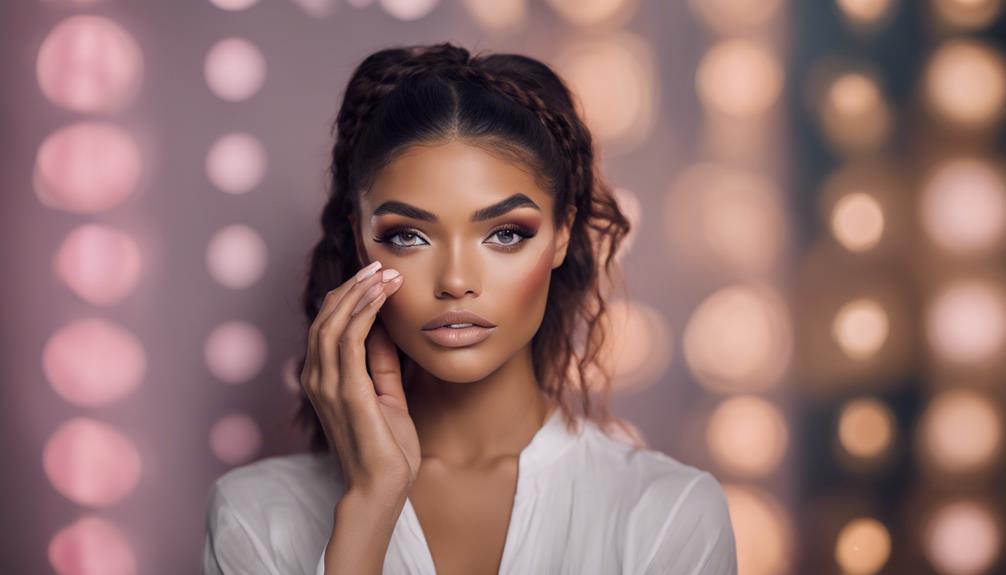
Color correcting involves applying opposite colors on the color wheel to neutralize various skin discolorations. For example, using green for redness or peach for dark circles.
When it comes to color correcting and concealing techniques, Instagram beauty gurus have some valuable insights to share:
- Peach or orange correctors are effective for canceling out dark under-eye circles on fair to medium skin tones.
- Green correctors are suitable for neutralizing redness caused by acne or rosacea.
- Lavender correctors can help brighten sallow or dull skin tones.
Concealing techniques include using a concealer that matches your skin tone to cover imperfections like blemishes or dark spots.
Makeup Setting and Finishing Secrets
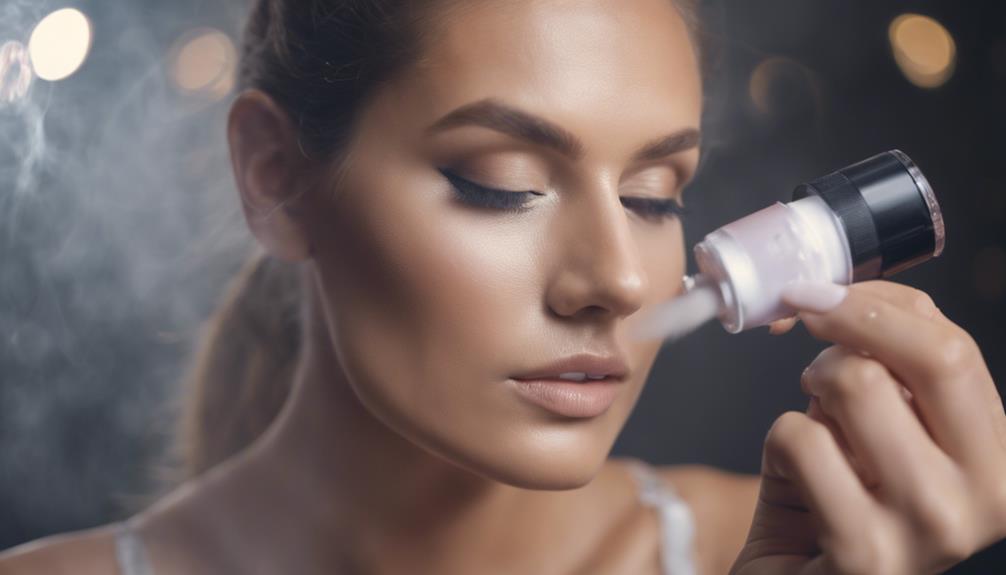
Setting makeup with a setting spray not only locks in the look but also extends its wear time, making it an essential step in any makeup routine.
Utilizing a makeup setting powder can help control shine and blur imperfections, ensuring a flawless finish that lasts throughout the day.
Additionally, incorporating finishing techniques like applying a dewy setting spray can impart a luminous glow to the skin, elevating the overall makeup look.
Setting Sprays Importance
Enhancing makeup longevity and preventing smudging, setting sprays play a vital role in the beauty routine of Instagram beauty gurus. These beauty essentials offer a range of benefits that contribute to flawless makeup looks:
- Locking Makeup in Place: Setting sprays are essential for keeping makeup intact and ensuring it stays fresh throughout the day.
- Preventing Melting and Transfer: Particularly useful in hot and humid conditions, setting sprays help prevent makeup from melting or transferring onto clothes.
- Variety of Finishes: With options like matte, dewy, and luminous finishes, setting sprays cater to different skin types and preferences, enhancing the overall look.
- Hydrating Ingredients: Some setting sprays contain skin-loving ingredients like hyaluronic acid, which not only sets the makeup but also provides hydration to the skin, promoting a healthy glow.
Beauty gurus often recommend popular setting spray brands like Urban Decay's All Nighter and MAC's Fix+ for their effectiveness in keeping makeup in place throughout the day.
Finishing Powder Techniques
For achieving a flawless makeup look that lasts all day, mastering the art of applying finishing powder is essential. Finishing powder, applied after foundation, serves to set makeup in place and diminish shine throughout the day.
There are two primary types of finishing powders: loose powders, favored for their lightweight feel and ability to provide a natural finish, and pressed powders, which offer convenience for touch-ups on-the-go.
Not only does setting powder help blur imperfections and create a smooth, matte complexion, but some formulations also contain light-reflecting particles that impart a luminous glow to the skin.
By properly setting your makeup with finishing powder, you can extend the wear time of your look, ensuring that your carefully crafted makeup stays put all day long.
Mastering the techniques of applying finishing powder can elevate your makeup game and give you that coveted flawless finish that beauty gurus on Instagram swear by.
Long-lasting Lip Tricks
Extending the wear time of lipstick involves clever tricks like setting lips with translucent powder and using a lip liner to prevent feathering.
When it comes to long-lasting lip tricks, Instagram beauty gurus swear by these techniques:
- Setting with Translucent Powder: Dusting a small amount of translucent powder over lip color can help lock it in place for hours, ensuring a smudge-free and matte finish.
- Lip Liner Magic: Applying a lip liner all over the lips before filling them in with color creates a barrier that prevents the lipstick from bleeding or feathering, resulting in a crisp and defined lip look.
- Blotting Technique: A thin layer of lipstick, followed by gently blotting with tissue and reapplying another coat, helps build color intensity while also increasing its longevity throughout the day.
- Highlighter Accent: Adding a touch of highlighter to the cupid's bow not only enhances the lip volume but also contributes to the overall longevity of the lip color by drawing light to the center of the lips.
Bold and Creative Makeup Inspiration
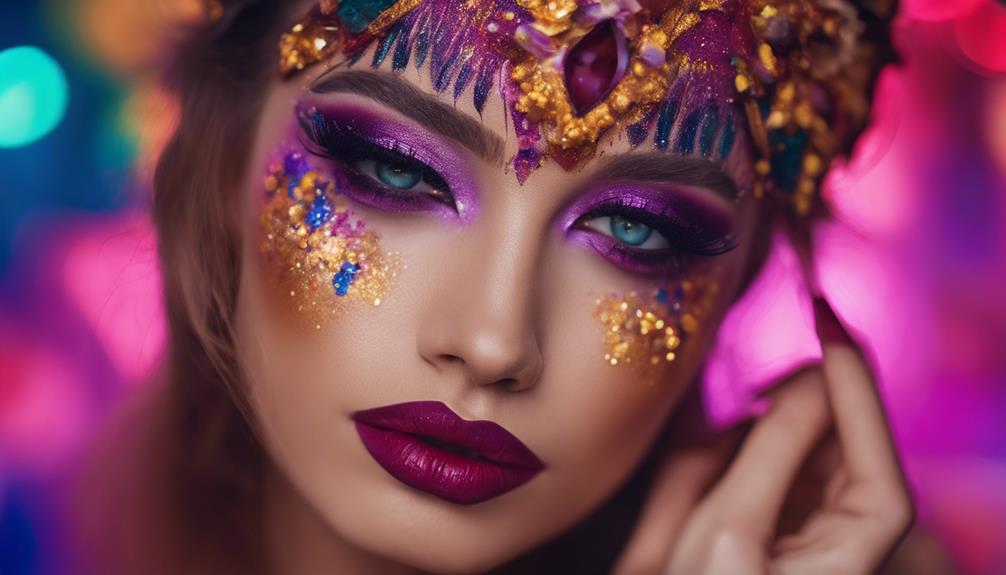
Showcasing daring and imaginative makeup looks, Instagram beauty gurus like @jadeywadey180 and @sadiaslayy inspire their followers with bold and creative styles. These beauty influencers utilize high-quality cameras such as the Sony A5100 and Canon to capture intricate makeup details, ensuring that their unique looks are showcased in the best possible light.
Bold makeup styles from influencers like @rocioceja_ and @thefashionfreakk not only set trends but also push boundaries in the beauty industry, encouraging their audience to experiment with different aesthetics. Moreover, unique makeup techniques like nose contouring and glittery highlights have become immensely popular among Instagram beauty gurus, adding an element of artistry and individuality to their creations.
Beauty gurus like @snitchery and @abbyrobertsartistry are known for experimenting with unconventional makeup trends, sparking creativity among their followers and encouraging them to think outside the box when it comes to their own beauty routines. This influx of bold and creative makeup inspiration on Instagram continues to redefine beauty standards and encourage self-expression through cosmetics.
Skincare Tips for a Flawless Base
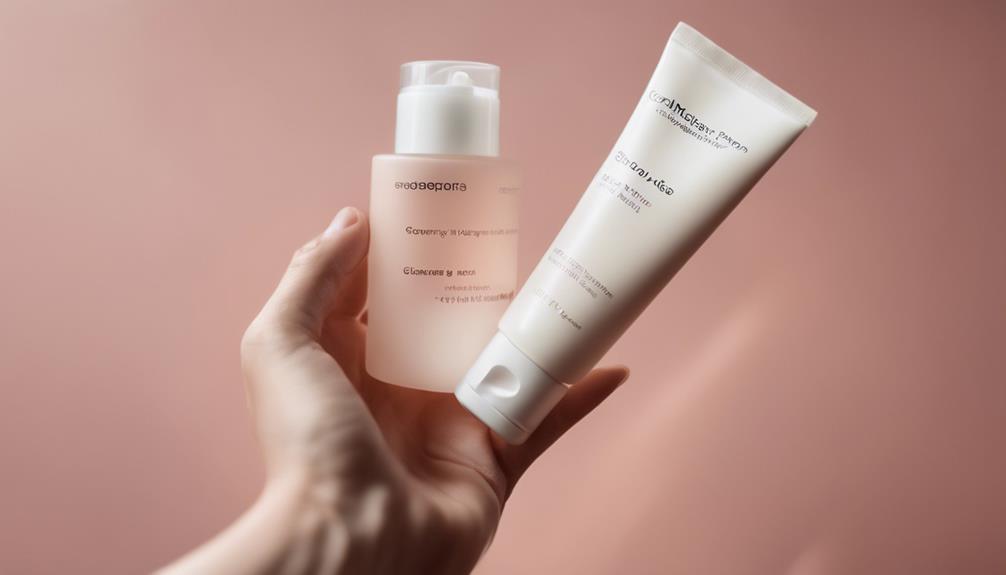
Creating a flawless makeup base starts with a proper skincare routine. To achieve a smooth canvas for makeup application, individuals should follow essential skincare steps:
- Cleansing: Thoroughly removing dirt, oil, and makeup residue is important for preventing clogged pores and blemishes.
- Toning: Balancing the skin's pH levels and tightening pores can help create a more even skin texture.
- Moisturizing: Hydrating the skin with a suitable moisturizer can prevent dryness and flakiness, ensuring a plump and healthy appearance.
- Sunscreen: Protecting the skin from harmful UV rays is essential in preventing premature aging and maintaining skin health.
Incorporating ingredients like hyaluronic acid and vitamin C can further enhance skin texture and brightness. Additionally, regular exfoliation aids in removing dead skin cells, promoting cell turnover for a radiant complexion.
Opting for skincare products with antioxidants adds a protective layer against environmental damage, contributing to overall skin health and a flawless makeup base.
Frequently Asked Questions
Who Is the Richest Makeup Guru?
The richest makeup guru is Huda Kattan, with an estimated net worth of over $610 million. She gained fame for her beauty influence and successful makeup brand, Huda Beauty. Forbes recognized her as one of the industry's most influential beauty influencers.
How Much Do Beauty Gurus Make?
In the ever-evolving world of social media influence, beauty gurus can rake in anywhere from $2,000 to $100,000 per sponsored post, with earnings hinging on factors like follower count, engagement, and expertise in their niche.
Who Is the Most Popular Makeup Artist on Instagram?
James Charles is the most popular makeup artist on Instagram. With over 24 million subscribers, his vibrant makeup style and engaging content have garnered a massive following. Charles continues to inspire and influence beauty enthusiasts worldwide.
Who Is the Number One Makeup Influencer?
Conclusion
To sum up, the makeup secrets shared by Instagram beauty gurus can help anyone achieve flawless looks with confidence. Remember, practice makes perfect, so don't be afraid to experiment and try out new techniques.
As the saying goes, 'Beauty is in the eye of the beholder,' and with these tips, you'll be sure to turn heads and feel your best. Keep shining bright with your makeup skills!




